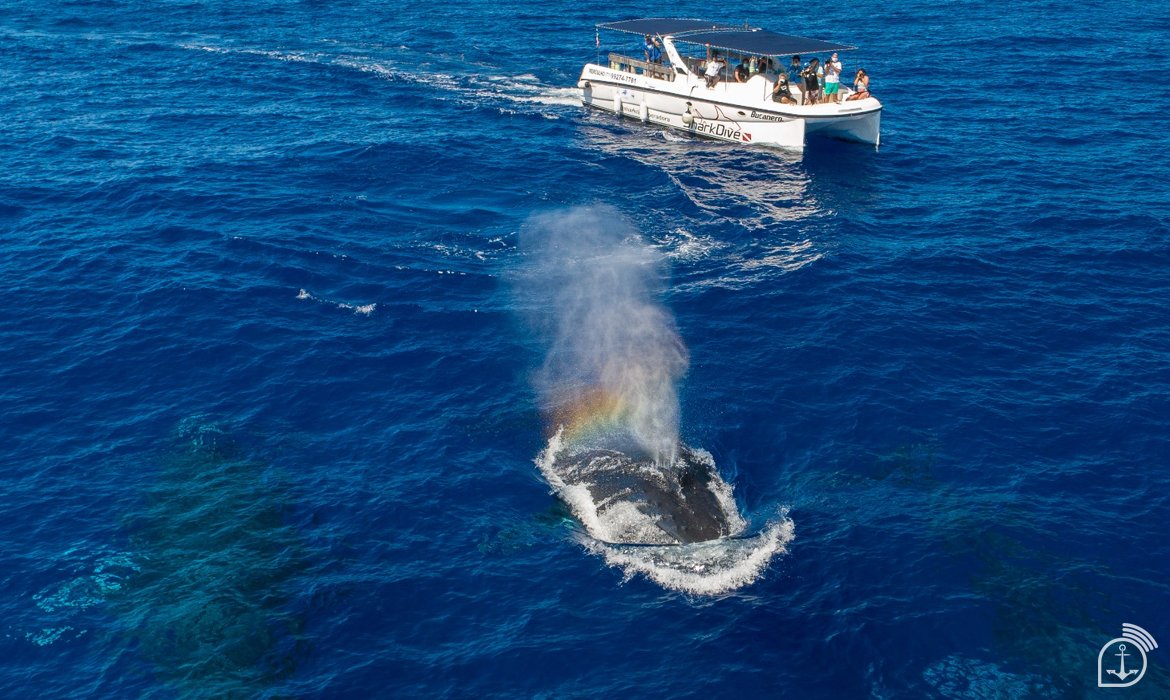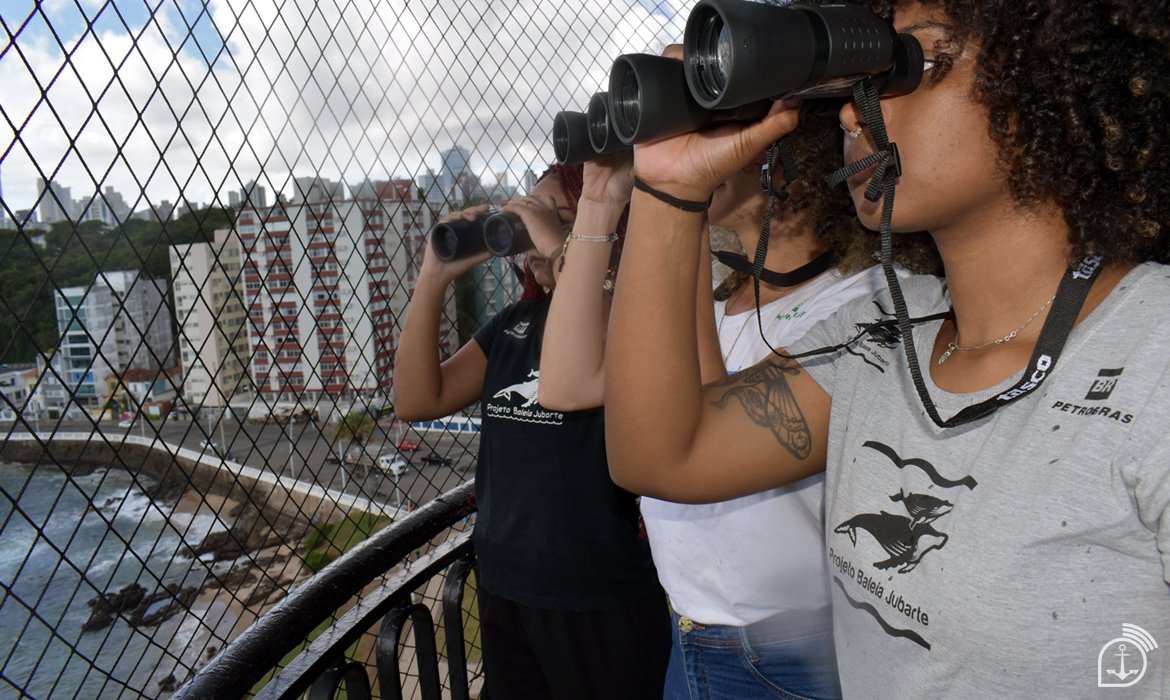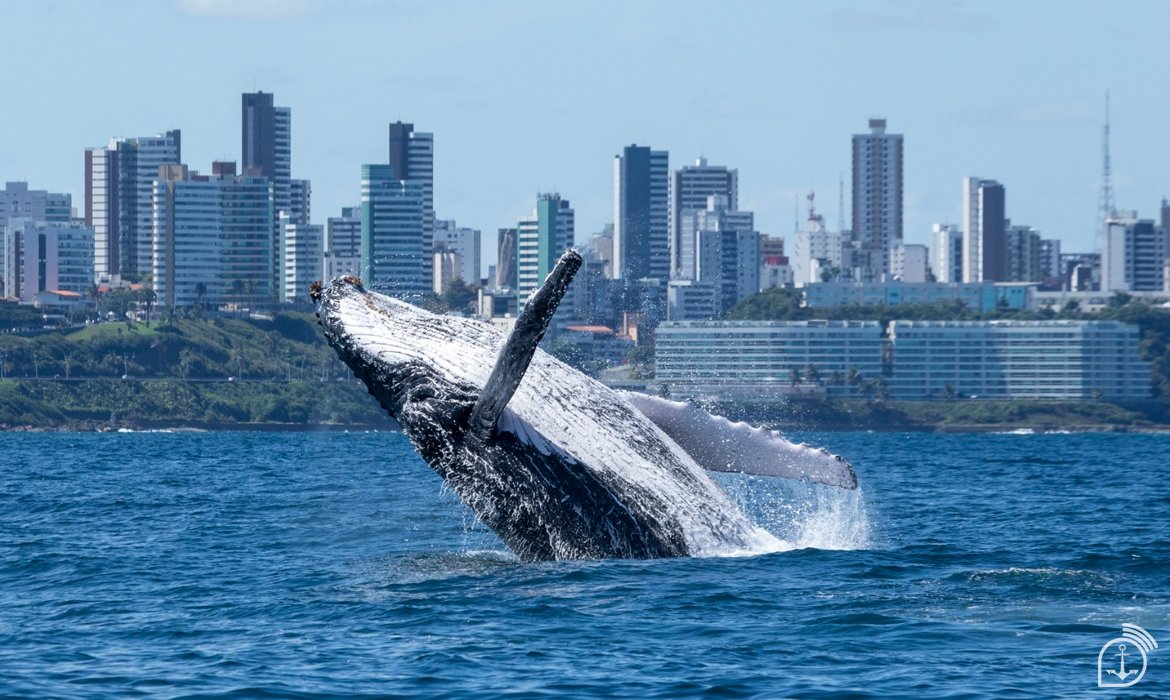The waters of Bahia, which are already famous for their marine biodiversity, are becoming even more enchanting at this time of year, with the arrival of humpback whales. From June to October, the coastal region counts on the presence of these giants, which migrate to the warmer waters of Bahia in search of reproduction and food. Among the places of observation, the city of Salvador stands out, which becomes a true meeting point between lovers of marine life and whales that choose the Bahian coast as a seasonal destination.

In order to observe and study the behavior of these animals during their stay in the region, the Humpback Whale Project team established a base at the Bahia Nautical Museum, located at the Santo Antônio Lighthouse, administered by the Brazilian Navy. The Barra Lighthouse is a strategic place, because it is at the tip of the Soteropolitan peninsula and allows a 180° view of the Bay of All Saints.
The project coordinator and PhD in Animal Science, Gustavo Rodamilans de Macêdo, explains that the monitoring helps to collect valuable data to better understand the life of whales and provides important information for their protection. “The natural spectacle attracts locals and tourists along the coast of Salvador, with increasingly frequent sightings of these marine mammals. Last year, we also had the fixed point of observation and sighted 577 whales.”
The waters of Bahia, which are already famous for their marine biodiversity, are becoming even more enchanting at this time of year, with the arrival of humpback whales. From June to October, the coastal region counts on the presence of these giants, which migrate to the warmer waters of Bahia in search of reproduction and food. Among the places of observation, the city of Salvador stands out, which becomes a true meeting point between lovers of marine life and whales that choose the Bahian coast as a seasonal destination.

In order to observe and study the behavior of these animals during their stay in the region, the Humpback Whale Project team established a base at the Bahia Nautical Museum, located at the Santo Antônio Lighthouse, administered by the Brazilian Navy. The Barra Lighthouse is a strategic place, because it is at the tip of the Soteropolitan peninsula and allows a 180° view of the Bay of All Saints.
The project coordinator and PhD in Animal Science, Gustavo Rodamilans de Macêdo, explains that the monitoring helps to collect valuable data to better understand the life of whales and provides important information for their protection. “The natural spectacle attracts locals and tourists along the coast of Salvador, with increasingly frequent sightings of these marine mammals. Last year, we also had the fixed point of observation and sighted 577 whales.”
Gustavo Rodamilans clarifies that the humpback whale is the most common species found here at this time of year, as it migrates to the warmer waters of Bahia, to reproduce and nurse its young. “The gestation process of whales lasts around 11 months and they can only breed in warm waters. After they are born, the mothers need to take very good care of the puppies, breastfeed them, so that they can withstand the migration in October to the South Pole,” he explains.
Thepresence of these animals enriches the marine ecosystem and demonstrates a possible sign of population recovery of this species, which has already been threatened with extinction due to indiscriminate hunting in the past. However, it is important to note that the increased presence of humpback whales brings with it a challenge, which is the need for greater attention and care on the part of sailors and vessels that frequent the region.
The case of the three crew members of the sailboat “XEF”, who were rescued by an action coordinated by the Eastern Maritime Search and Rescue Service (Salvamar Leste), after colliding with a whale on June 21, 130 kilometers off the coast of Ilhéus, shows the importance of care with navigation.
To avoid similar incidents, it is critical that local authorities, boat operators and sea lovers are well informed about the presence of humpback whales in the area. Establishing safe navigation zones and taking preventive measures, such as speed reduction, can help minimize the risks of accidental collisions. In this sense, the Brazilian Navy has been committed to making sailors aware of the guidelines to be followed during the whale sighting period.
“It is important to remember that these guidelines do not only apply to private vessels, but also to tour operators and other nautical activities,” said Port Captain, Sea and War Captain Wellington Lemos Gagno.

